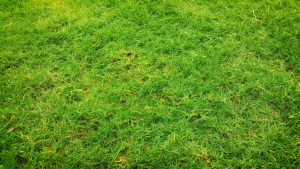How To Create Content That Ranks On Google?
The availability of excellent content on your site boosts your search engine rankings and increases the number of visitors to your site. It also enhances your brand and aids in the development of long-term client relationships.
Simply put, excellent SEO content ranks well in search engines like Google. The primary purpose of SEO content is to drive traffic from search engines. Product pages, blogs, articles, lists, tutorials, videos, infographics, slideshows, and glossaries are all examples of SEO content.
Whether it’s content readers or buyers, personalized content is preferred nowadays. Without SEO, material may end up on page 50 of the search results, with traffic on those pages being less than desirable.
Even if the material is excellent, if it is lost in the search results, the effort, value, and engagement are wasted. As a result, the first-page ranking has the potential to drive traffic to a page and launch content after a user clicks.
Now, Let’s look into the top tricks to create content that ranks on google.
Write content that is appropriate for the target audience
The text does not have to be on the same line all of the time. One’s material could be on issues that appeal to their target audience and fit their preferences. For example, a company selling a product does not have to confine its content to that product; it may write about the industry as an expert in it by providing SEO-friendly content that is both entertaining and valuable.
Proper use of headlines
If the material is long and cumbersome, readers will lose interest, therefore you only have a few words to make a strong impression. As a result, never underestimate the power of a good headline! Make headlines that are both clear and interesting. Make use of long-tail keywords and intriguing meta descriptions to describe the page’s quality. Remember that the title and meta description are what appear in search results, so make them count!
Keyword research and use
Use relevant, keyword-rich words in the headlines and throughout the content to inform both readers and search engines about the topic. However, be aware that using too many keywords will not only turn off readers, but will also result in keyword stuffing penalties from search engines. Use terms with care, adhering to a logical flow.
Like for example : for our quotation tool, we can optimize the keyword such as quotation template or quotation template to reach more audience.
Prioritize your content
It’s critical to prioritize your material! Begin by determining the keywords for which you wish to optimise your homepage. Then, if you have them, your category and service pages, and finally, your product pages. You can now move on to creating longer-form content that ranks in Google’s top results. Begin with your most popular goods and services and work your way up. If you’re still unsure where to begin (perhaps you’re a new company with insufficient sales to know what your best seller is), studying your competition is a good place to start.
Check your competitors
It’s usually a good idea to check out what your competitors are doing with their websites.
You may get an indication of how much content they’re including and what they’re writing about by looking at their blog content and important sites.
Form An Outline
Making an overview can help you lay the groundwork for the rest of your piece. You’ll have a much harder time developing content if you don’t have that.
This works well for long-form content like as blog entries, but don’t be hesitant to utilise it for shorter content such as category and product pages.
Because breaking up your information into sections will assist your audience better comprehend it, the outline should primarily focus on headings.
Add Photos, videos in your content
Incorporate photos, vidoes into your posts. People are visual creatures. Including a picture into the narrative can make a significant impact. Posts with photos can be pinned, adding additional source of traffic to the website, in addition to promoting the content across multiple social media channels.
Internal Linking
For SEO, a link is a significant ranking element. If the article is picked up by another site, linking to one’s own articles or website ensures a link back to the host website. Creating outstanding content increases reach, and if other websites link to it, the sharability and likeability will be amplified, so aim for quality!
Optimize your metadata
One of the most critical steps in helping your content rank highly on Google is optimising the metadata on your page. Metadata is the data that appears when a keyword or phrase is typed into a search engine.
If possible try to add your focus keyword frontloaded in the title. Although Google does not utilise the meta description to influence page rank, it is used by consumers when picking which search result to click on. Because the number of visitors to your website and how long people remain after clicking through are both ranking factors, it’s critical that your meta description entices people to click your result.
Check your content with google analytics
Monitor your efforts to stay on top of SEO-friendly material. Google Analytics is a free tool for tracking page views and average time spent on a page. To get an indication of how users interact with the website after landing on the content, look at factors like bounce rate and time on site.
Conclusion
Before you begin, you must first create a personalized SEO content plan that is tailored to your audience and goals. To summarize, both SEO and content writing are critical components of a successful outreach strategy, thus it’s critical to employ high-quality tactics to assure increased traffic and interaction on one’s website.
Following these tips for your next content article, would definitely help you rank on the google page.












